Ace quick missions & earn crypto rewards while gaining real-world Web3 skills. Participate Now ! 🔥
Nowadays, wherever you look, it seems like algorithms and artificial intelligence are everywhere. From your Netflix recommendations to the ads you see while browsing your social media, algorithms have become an integral part of the internet. So, it’s unsurprising that AI crypto trading tools are gaining traction in the financial world.
Getting into the world of crypto algorithm trading can be complicated at first. After all, the name itself sounds so technical. No worries, though – I’m here to help you. Today, we’ll be going through all the essentials you need to know in terms of AI crypto trading.
Even if you have no technical experience with algorithms or AI, it doesn’t mean that these tools are out of your reach. We’ll find out how artificial intelligence crypto trading works, how you can use trading bots, and which markets utilize these tools. We'll also look at where else in the crypto space you can find cryptocurrency algorithm lists by exploring consensus mechanisms.
At the end of this guide, I’ll also point you towards a few crypto exchanges – including the likes of Binance, Kraken, and Kucoin – where you’ll be able to try out AI trading for yourself.
Without further ado, let’s start learning about AI crypto trading tools.

Did you know?
Subscribe - We publish new crypto explainer videos every week!
What Are Crypto Quests? EASIEST Ways to Earn Rewards Explained


Table of Contents
Algorithms and AI Crypto Trading: The Background
Our first order of business is establishing what AI crypto trading is exactly. Put simply, AI trading is a method of trading that uses custom-built programs that run bots to analyze data and conduct transactions. Some trading strategies, such as arbitrage, require incredibly fast response time – faster than the human eye can track the market. So, the AI bots are used to optimize this process instead.
Latest Deal Active Right Now:For a limited time only, get Top-rated Ledger bundles for yourself and your loved ones with a 10% Ledger discount code. Take advantage of this valuable Ledger deal NOW!
The bot market analysis is done using algorithms (algos for short). Hence, you'll also know that method as crypto algo trading. That said, these tools are not unique to the crypto markets. In fact, they originated from traditional finance.
Initially, algorithms and trading bots were used in the stock markets. The use of AI in finance dates back as far as the 1980s. At first, these tools were used to make market predictions. Human error can be a defining factor of a successful trade, and AI trading tools helped minimize the risks involved. So, the primary purpose was to analyze the market trends and help make accurate long-term financial plans.
As the financial sector grew and developed, so did the algorithmic tools. The amount of data required to process in the stock market has far exceeded what humans can handle manually. Additionally, with the rise of the internet, various fraud schemes have become more prominent. So, algorithmic tools have adapted and also are being developed to be fraud-proof.

Let's jump to the 2010s – Bitcoin (BTC) is only a few years old, but the shape of the crypto landscape that we know today has already begun to emerge. More and more blockchain-based cryptocurrencies are launched, and new platforms start popping up. Two types stand out in the budding crypto financial sector – centralized and decentralized exchanges.
As the computing power of AI tools has improved over the years, crypto algorithm trading has become more or less commonplace among centralized exchange users. Furthermore, tokenized stocks are becoming increasingly available, blurring the lines between how AI tools are used in traditional finance and how they've been adapted for the crypto market.
Legality and Trustworthiness
Hearing about AI crypto trading, as well as the use of these tools in the traditional markets, some people might wonder – isn't that cheating? Would having access to custom-built algorithms give some traders an unfair advantage that can't be balanced out?
Well, if you're worried that opting for crypto algo trading will put you in trouble, relax – not only are these tools legal, they are a wholly accepted part of the trading game. An algorithm gives traders an advantage, but it's also accessible enough that even novices can easily use them.
In fact, some trading strategies depend on the use of AI tools to be executed. Take arbitrage, for example. It's a trading strategy where you buy an asset at a lower price on one exchange and sell it at a higher price on a different platform. This strategy requires you to follow the market rates minute-to-minute – even second-to-second.

Naturally, even if you have multiple monitors set up, the human eyes and brains cannot process information that quickly. So, what you can do instead is set up an AI crypto trading bot to automatically buy and sell when the market is in the right position.
Or consider scalping – another strategy that requires agility and good market understanding. Scalpers set up speedy trades (though not as quick as in arbitrage) to buy and sell the same asset multiple times a day. The goal of scalping is to earn smaller profits with each transaction that builds up over the course of the day.
While it may be simpler in day trading, where the open market hours are limited, it can get more complex in the 24/7 landscape of crypto. As much as you might like it, you can't stay awake tracking the market every single day. So, some traders may opt to set up trading bots to handle the 5-minute sales.
So, as you can see, artificial intelligence crypto trading is an accepted and routine practice among traders – particularly in the pro circles. If you're curious to learn more about other trading strategies, some of which also rely on AI tools, you can find out the top five list for beginners and advanced traders here.
Consensus Algorithms
In terms of crypto, the algorithm-related feature that you'll see used perhaps the most frequently is the "consensus algorithm". It's not tied to crypto algo trading specifically, but is an integral part of the broader blockchain ecosystem.
Whether we're talking about Bitcoin, Ethereum, or any other cryptocurrency, the blockchains they're built on need one essential feature to run – consensus algorithms. You may also see them referred to as consensus mechanisms in some places. Regardless, they refer to the same crucial aspect of blockchain technology.
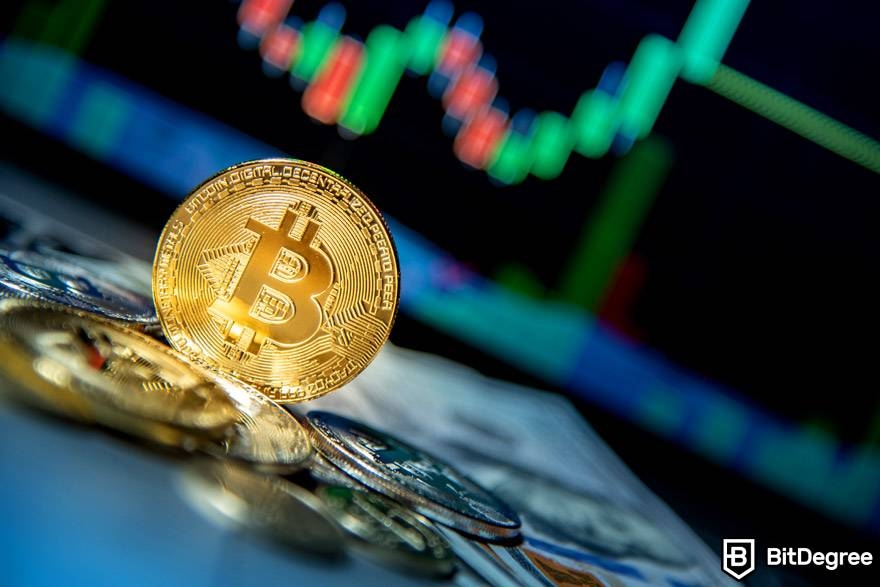
We won't get too techy here. Blockchain technology is a complicated topic that requires an article (or a few) of its own to figure out in-depth. In fact, we've got a few ready – like our beginner's guide to blockchain and the guide on how it works. And if you come across any terms that have you scratching your head, feel free to consult our Crypto 101 Handbook – chances are, you'll find the answers there.
Put simply, the consensus algorithm is the technology that keeps the blockchain running. It serves many functions, but the two core purposes are keeping the network safe and processing all transactions. This is done via block verification.
Imagine the blockchain exactly as its name implies – a chain with a bunch of blocks that are connected to each other. There's the foundation block, known as the genesis block, and from it, one by one, the entire chain is created. The blocks are where all the important information is stored. In the case of trading, that means transaction data, such as when it occurred and which wallets were used.
We need to take the block size into consideration when we discuss consensus algorithms. Depending on the code, each blockchain will have a size limit for how much data can be recorded in a single block. Bitcoin and many chains built using its model are limited to 1 MB. It has remained unaltered since day one – with some hard forks as exceptions.
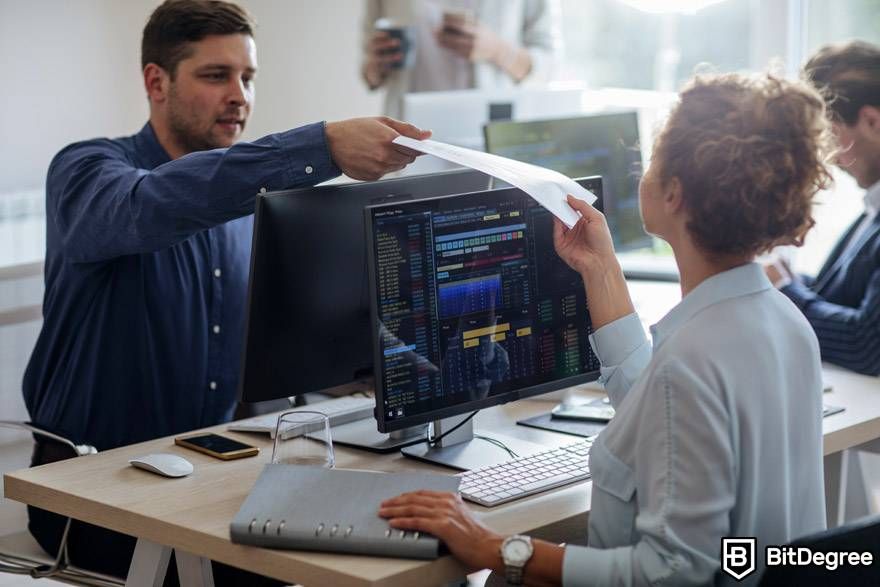
Others, like Ethereum, adjust the block size over time to meet the users' requirements. In fact, the average block size changes pretty much daily, sometimes shrinking for a day but, in general, moving towards increasing its spatial limits. However, these are technical nuances that we don't need to dwell on.
The cryptocurrency algorithm list is quite long. The technology allows for freedom of innovation, so many blockchains use one-of-a-kind consensus algorithms to keep their systems in order. That said, let's quickly take a look at a few of the most popular consensus algorithms:
- Proof-of-Work (PoW) – this is considered to be one of the oldest consensus mechanisms. It was used in the development of Bitcoin. Here, special computers are built to solve complex mathematical problems. The miner that successfully solves the puzzle receives a reward. PoW is often criticized as it requires a lot of energy and specific hardware resources;
- Proof-of-Stake (PoS) – PoS is often seen as a more energy-efficient alternative to Proof-of-Work. Instead of a hardware-based method, it requires the validators to stake the blockchain's native tokens. Depending on the blockchain, users may need to issue a minimum stake to be accepted as validators.
- Proof-of-Authority (PoA) – a consensus algorithm popular among private blockchains, such as those used by various enterprises. Validators must use formal identification and ensure the authenticity of their network nodes. Such networks typically have strict rules for network management.
While this cryptocurrency algorithm list is far from complete, these three methods are the essentials that you should know at the beginning if you're more curious about the blockchain technology itself. However, it's time to wrap up the little detour to the blockchain side of things and take a closer look at the AI crypto trading technology itself.
Trading Bots
So, let's finally turn towards the key players of AI crypto trading – trading bots. What do they do, exactly? What has led to them becoming such an integral part of professional trading? How can they make the traders' lives easier? The answers are going to be simple – and that's where the beauty of the algorithm lies.
Trading bots are basically pieces of software that connect to the market and track its historical performance and current positions. Using this ginormous amount of data, a trading bot can start working on a future market trajectory. In turn, using the processed data, investors can refine and apply their trading strategies.
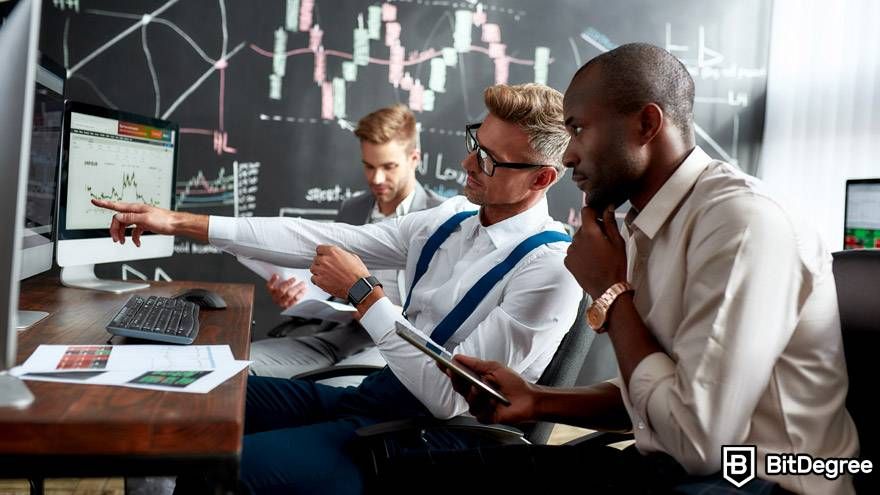
Often, trading can be a heated process. One wrong move, and you can lose everything you've put forward – and more. In a moment of panic, you might make a regrettable mistake or miscalculation that affects your funds. Trading bots are here to help you avoid such errors.
This software is programmed to do precisely what it's told. The algorithms are tested and fool-proofed to minimize the potential risks, allowing you to relax and look away from the charts. Additionally, most crypto algorithm trading tools offer automatization, meaning that you can set the buy-sell prices and leave it be – the bot will do all the work for you.
But why do we really need trading bots? Can't we just do a manual marketing analysis and work on staying calm under pressure? Well, when it comes to traditional markets, the answer is probably yes, but a trading bot would still make your life easier. However, if we're talking about AI crypto trading, we must discuss volatility.
Cryptocurrency is considered a highly volatile trading environment. The prices change very rapidly, especially compared to traditional financial markets. In fact, a single tick upwards or downwards in the chart of an asset like Bitcoin or Ethereum can start a new trend for thousands of other assets.
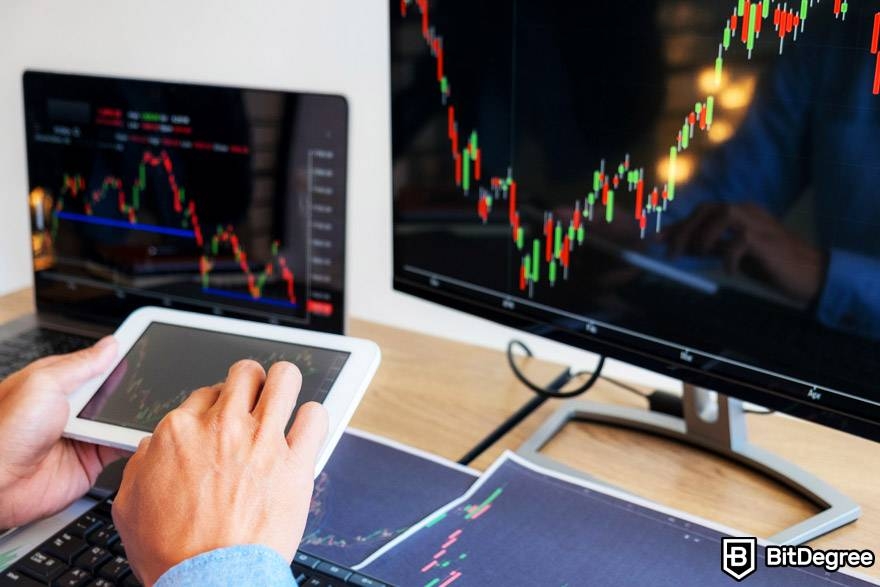
Even a tweet from a market expert or sudden news about well-known crypto companies can massively impact the whole market trend. It can be next to impossible to predict, even if you know the historical market data like the back of your hand. However, a trading bot has a better chance of reacting to such updates faster and adjusting its trajectory accordingly.
Indeed, for many professional investors, crypto algorithm trading services are a lifesaver. In fact, many may not go for the ready-made solutions and choose to create their own custom bots instead. You might be disadvantaged if you don't have experience with programming languages, Python in particular, but there are many programmers ready and able to develop your perfect bot.
Of course, if you're opting to use a third-party trading bot, you should always do your diligence and look into its legitimacy. While the goal of AI crypto trading is to reduce the amount of fraud in the markets, some malicious parties may upload bots that also come equipped with trojan viruses or cryptojacking software. So, be cautious and use verified tools.
As for where you can find crypto algo trading tools on various centralized exchanges? See if "Grid trading" is available. This is an automated trading service that allows you to place orders within a set minimum and maximum price. Once you set the prices, the trading bot takes over and automatically monitors the asset's market performance.
So, trading bots are really easier to understand than they might appear at first glance. Now, let's sum up the pros and cons of using AI crypto trading tools:
| PROS | CONS |
| Enhance trading strategies | Some trading bots may not support specific strategies |
| Advantage for experienced traders | Can be difficult for novices to use |
| Can be custom-built for personal needs | Require a good understanding of programming languages |
| A broad variety of options | Some trading bots may act as malware |
Table: The pros and cons of artificial intelligence crypto trading tools
That should clear up the question of what trading bots are and what role they play in crypto algorithm trading. By now, you might even be interested in seeing for yourself how this whole process works. So, let's find out where you can do just that.
Best Exchanges for AI Crypto Trading
Now that you know what AI crypto trading is and how the algorithmic tools work, you might be curious about seeing it all in action. As I mentioned earlier, you're more than likely to encounter AI trading services on centralized cryptocurrency exchanges. However, there are thousands to choose from, all offering different markets. Where do you even start?
Well, to make things easier for you, I've compiled a short list of the top three exchanges that support crypto algo trading – those being Binance, Kraken, and Kucoin. If you want to learn more about what they all have to offer, you'll find our compilation of the overall best crypto exchanges here.
Binance
The Binance cryptocurrency exchange probably doesn't need an introduction. However, in case you haven't had a chance to check it out yet, here's a brief one. Binance is considered one of the biggest centralized crypto exchanges in the world based on market capitalization. It also happens to be one of the best.
The entire scope of services offered by Binance could call for an analysis of its own – and we happen to have a full review of the platform here. From spot and margin trading to derivatives markets; from brokerage to auto-investments; from gamified earning to project launchpad – you name it, Binance likely has it.
So, it's really unsurprising that strategies using artificial intelligence crypto trading tools are common and accessible on this platform. In fact, you're even able to build your own! Binance fully supports custom-built trading bots. According to some sources, this platform is known for the highest number of crypto trading bots available.

|

|
|
|---|---|---|
| Crypto Guides, Videos, Podcasts | A Comprehensive User Center that Displays All The Information You Need in One Place | |
|
Visit site
Read review |
See TOP10 Brands
Read review |
Table: Main features of Binance and Kraken
These tools can be used on any of the markets provided by Binance. So, if your trading strategy calls for the use of crypto algo trading software, you'll be able to adjust accordingly using Binance-compatible trading software.
Additionally, Binance spot traders can access the grid trading functionality. It's recommended to use it during volatile markets, when price fluctuations are the most frequent, as the automatic trading bot aims to maximize the profits within a smaller price change margin.
So, as far as artificial intelligence crypto trading is concerned, Binance is a solid option.
Kraken
Much like Binance, Kraken is also among the leaders in the global crypto industry. This centralized exchange is known for spot, margin, and derivatives trading, over-the-counter (OTC) transaction support, and institutional services. Fun fact: it's one of the only crypto exchanges with permission to provide margin trading in the USA!
So, is it really surprising that trading bots are supported on Kraken? I wouldn't say so. In fact, the team even emphasizes that AI crypto trading tools play a very valuable role in managing liquidity and providing market activity.
You have plenty of options here as well. For starters, Kraken supports APIs. So, if you have developed a trading bot of your own or have access to open-source code, you can simply implement your software on the platform and voila! Now you can automate the process based on your personal needs.
And if playing around with custom tools isn't your preference, no worries. Kraken offers integrations with some of the internationally renowned trading bot service providers, including Bookmap, Gunbot, and Margin. So, you'll be sure that the tools you use are reliable and trustworthy.
As you can see, Kraken is a great option if you're looking for a solution that combines convenience with security.

Did you know?
Subscribe - We publish new crypto explainer videos every week!
Proof of Work vs Proof of Stake: Which is Better? (ANIMATED)



- Secure and reliable
- Accepts fiat currencies
- Lots of trading options
- Reputable exchange
- Accepts fiat currencies
- Offers various trading options

- Accepts fiat currencies
- Simple to use
- Supports only trusted cryptocurrencies
- A leading cryptocurrency exchange platform
- Best for all type investors
- Accepts fiat currencies

- Beginner-friendly
- Secure
- Decent trading and withdrawal fees
Kucoin
Last but not least, we've got Kucoin. Launched in 2017, this platform has grown to be one of the most renowned centralized crypto exchanges. Its services include spot and derivatives trading, peer-to-peer (P2P) fiat transfers, and a native crypto wallet. Of course, this catalog of services also includes – you've guessed it – crypto algorithm trading functionality.
In fact, unlike the other two platforms that we've discussed here, the Kucoin trading bot was built in-house. This means that it's brought to you by Kucoin, on Kucoin. So, if you don't have your own custom solution and don't want to look for third-party providers, this platform offers you a great alternative.
The range offered by the Kucoin trading bot is pretty impressive. Are you interested in spot trading? Check. Perhaps futures as well? You've got it. The trading bot is focused on providing you with a convenient and profitable grid trading experience – and the Spot Grid platform has been optimized for newcomers, so you won't be left out even if you have less trading experience.

|

|
|
|---|---|---|
| Advanced Users & Beginners | Best for Buying & Selling Crypto with Small Fees | |
| Turkey, Argentina, Vietnam, Ukraine, + 180 more | United Kingdom, India, Russia, Mexico, + 150 more | |
| See All Coupons of Best Exchanges | See All Coupons of Best Exchanges | |
| One of the leading crypto exchange platforms in the industry. | A reliable and well-established cryptocurrency exchange platform. | |
|
See TOP10 Brands
Read review |
See TOP10 Brands
Read review |
Table: Main features of Kucoin and Binance
Aside from the more conventional crypto grid services, you'll also encounter Smart Rebalance, DCA, and Infinity Grid.
Smart rebalance is a strategy that originated in traditional markets. It follows the principles of sell-high-buy-low to increase your funds. Dollar-Cost-Average, or DCA, is a tool that lets you automatically buy the same amount of your investment at specific, regular timeframes. Infinity Grid is an advanced grid service that allows you to continuously perform buy-low-sell-high transactions alongside arbitrage trading.
So, when it comes to built-in variety, Kucoin has a lot to offer traders of all backgrounds and experiences.
Conclusions
So, as we wrap up our guide to the essentials of AI crypto trading, let's take one final look at some of our key concepts. AI, trading is the use of algorithms and trading bots to improve your market performances and reduce the risk of making any human errors. Artificial intelligence crypto trading has derived from similar services used by traditional stock market traders, and has been adapted to meet the needs of the blockchain-based digital space.
Cryptocurrency exchange platforms are generally favorable towards trading bots, and users can choose to either use certified partners or rely on their own custom-built trading bots. Platforms like Binance, Kraken, and Kucoin offer a broad range of services that can enhance your trading strategies by utilizing crypto algorithm trading.
Finally, we took a quick detour and looked at the blockchain technology itself. We learned of some of the main terms that you'll find in a cryptocurrency algorithm list for consensus mechanisms. As always, if you're curious to learn more about the technical side of things, check out our Crypto 101 Handbook, which covers topics ranging from blockchain technology to crypto wallets.
With all this brand-new knowledge, I hope you have fun exploring AI crypto trading!
The content published on this website is not aimed to give any kind of financial, investment, trading, or any other form of advice. BitDegree.org does not endorse or suggest you to buy, sell or hold any kind of cryptocurrency. Before making financial investment decisions, do consult your financial advisor.


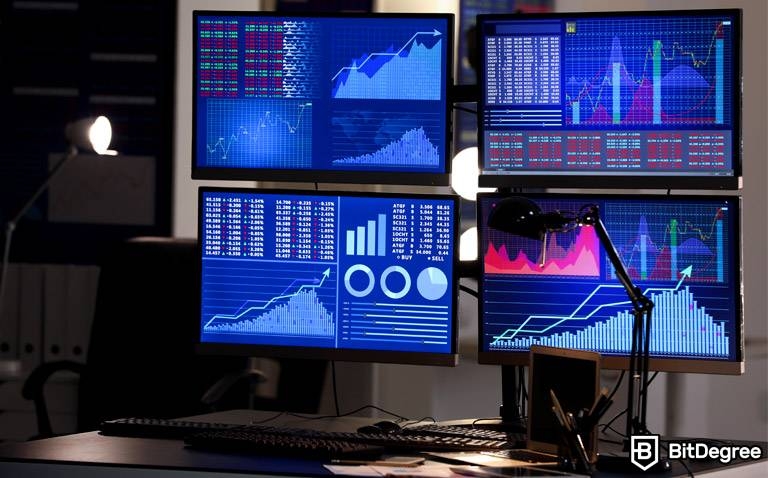


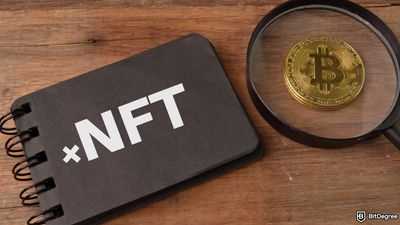









Whether or not the cryptocurrency exchange offers an opportunity for investors to observe the trading behavior of their peers.